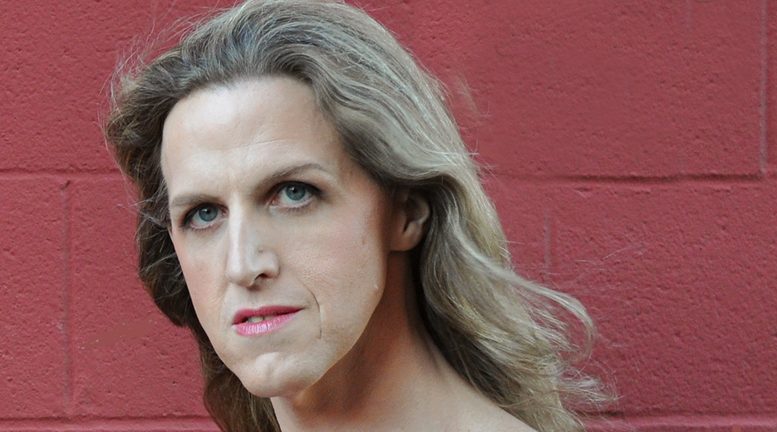Remembering the roots of Pride
By: Lorelei Erisis*/TRT Columnist—
Pride season is officially here. As I write this, I’m fresh off of marching in the Northampton (NoHo)Pride Parade. By the time this hits the presses, Boston Pride will be looming. And I will be preparing to march in that too.
I usually refer to it among my friends as, “Smiling and waving season.”
All told, I have been marching in these two Pride celebrations for nine years now. I’ve also marched in both the Providence and New York City Pride Parades.
In my first Noho Pride Parade as the newly crowned Miss Trans Northampton, I rode in the back of a pickup truck, which was super classy. In the Providence Pride Parade, I upgraded a bit and rode in the back of a restored 1932 convertible Mercedes! That was very cool.
But mostly I have always preferred to march. It’s where I shine.
Every year I unpack one of my two crowns (plus a tiara, and three sashes) from the Kermit The Frog lunchbox I keep them in, to keep me from taking myself too seriously (technically the tiara has its own separate Hello Kitty box). I pull a pretty dress out of my overstuffed closet, lace up my Doc Martens boots—I tried marching in heels one time and t was a bad idea— and I hit the streets.
Most of the times I’ve marched, it’s been with groups of trans people and our allies marching for trans rights or to represent trans visibility. There have been a couple of exceptions to this, though.
The first time was when I marched in the New York City Pride Parade with a group called, “Take Back Pride.” I had no formal marching plan that year. I simply put on the crown and sash, talked my way past the police barricades—It’s amazing what you can get away with when you’re wearing a pretty sash and a glittery crown—and walked around one of the gathering pens for marchers asking people what their group was until I found a group I thought would line up with my ideals.
“Take Back Pride” had a very simple message. They wanted to put the political and revolutionary voice, the rebellious Stonewall spirit, back into Pride. It was a message I found myself easily aligned with; one that has resonated with me through the years. And, apparently the group appreciated my voice as I appreciated their message, since I was very quickly pushed to the front of the contingent!
To this day, when I march in Prides, one of my main messages, regardless of the specific group, is to remind the crowds that, “Pride started as a protest! Never stop fighting!”
At this recent Noho Pride, those words were especially poignant for me. This year I decided, after much thought, that I should break with my usual tradition of marching with a trans or queer specific group and march with the contingent of sex workers and their allies who were marching in Noho Pride for the first time to protest the recent passage of SESTA. A nasty piece of anti-sex worker legislation that I wrote about here last month. It felt like the right thing to do, the moral thing to do. It was an action most closely representative of the original spirit of Pride, back when it was more protest than party.
And this is what brings me to what I would like you to consider.
If you are planning on marching, or riding in a Pride parade this summer, I would like you to think carefully about who you are going to march with and why you are marching.
I have no problem really with the fact that Pride has become primarily a party. I do think it’s good to come together to celebrate the great strides we have made as LGBTQ people. It’s important just to see how many of us there are and how big our crowds of supporters have grown.
But I also think it’s important, crucial even, to remember the roots of Pride. Remember the protests and the police violence. Remember the bigots who would line the routes of the first parades to harass participants, so that some marchers had to wear paper bags over their heads for fear of being recognized.
Remember the drag queens and the sex workers, the queer people of color who organized and led those first marches only to find themselves marginalized later by cisgender gay people who sought to “normalize” queer culture and bring, or force, LGBTQ folks into the mainstream.
I believe it’s especially important this year, given the state of the country and the world to bring some of that protest spirit back into Pride. I’m glad to see so many corporations, businesses, and politicians turning out to support LGBTQ folks. I truly am.
However, maybe consider marching with one of the more marginalized groups that could benefit from your voice and your presence filling out their numbers. Always ask, of course. And if you are white, or cisgender, remember to put people of color, trans, and other voices forward.
If you have never marched before, if you have always stood on the sidelines or stayed at home, there is no better time than right now to stretch your legs in the street, raise a sign high, and lift your voice in solidarity with the oppressed and the marginalized.
Let’s put the protest back in Pride!
Slàinte!
*Lorelei Erisis is an actor, activist, adventurer, and pageant queen. Send your questions about trans issues, gender, and sexuality to her at: askatranswoman@gmail.com.







